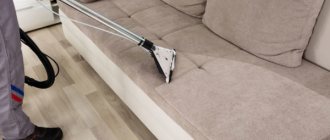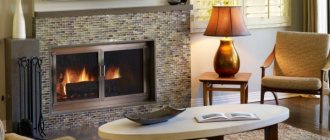The advantage of DIY lamps
Table lamps are now expensive, especially if you need a certain size, color, etc. To buy the right option, you will have to spend time searching at several retail outlets. To save not only money, but also time, you can make a table lamp with your own hands.
In addition to such savings, there are also a number of advantages:
- The required size is set independently, which depends on the location of the device and the allocated space;
- Individuality, because it is very difficult to make two identical lamps with your own hands; small details will differ.
DIY floor lamp master class with photo
- Step 1.
Let's proceed to the step-by-step process of manufacturing the product.
First, let's prepare the slats. They need to be processed so that the surface is smooth and even, and then a layer of paint is applied. You can choose any paint at your discretion, so that the new lamp fits into the background of your interior. Create a sketch of the future lamp . To do this, draw on paper an approximate diagram of the rings that will hold the entire structure. This is easy to do with a compass; the circles will turn out even.
- Step 2.
The made templates in the form of rings must be transferred to the tree so that they match in diameter. It should be equal to 50 centimeters.
On the second piece of wood, the size of the circle will be 25 centimeters in diameter. In the last template, you need to mark the places where the cutouts will then be made. This is necessary in order to immediately find the required place based on the marks.
- Step 3.
Using a jigsaw, you need to make four identical holes. We should have had two blanks. One is smooth like a ring of a larger diameter and the second is smaller with holes in the center. After cutting, they need to be properly processed and painted.
- Step 4.
On the slats, which we have previously sanded and painted, it is necessary to apply markings. So that they are at the same distance from each other and attached strictly along the diameter of the circle. It is necessary to take a distance of 20 centimeters from below and above.
Then the slats must be nailed to the rings, this must be done parallel to each other so that they form an even diameter of the circle. It is more convenient to attach the slats to each other if you initially create a cross for the base, and then simply fill the remaining space.
- Step 5.
Our product is almost ready, all that remains is to paint it in the desired color and leave it to dry. You can choose paint of any color to suit your taste and interior style. Brighter colors are suitable for Art Nouveau style , while pastel and soft colors are suitable for Baroque. If you are creating a lamp for a summer house, then a wood-like color is best; this will add naturalness and coziness to the room.
- Step 6.
When the frame of our lamp is almost ready, you just need to run the wires along it and attach the LED. To do this, we need a wire with a cartridge, which we will lower inside and attach to the structure. The wire can be left hanging freely or attached using small fasteners and attached to one of the beams. Our handmade floor lamp is ready!
The main structural elements in a table lamp of any type
Each table lamp has the following basic elements in its design:
- electromechanical - this is both the supply of power from the socket to the light bulb and ensuring the stability of the device;
- the supporting part serves to hold the illuminator;
- The illuminator is represented by a lamp with a lampshade.
The electrical part of the structure contains a plug, a wire, a switch, and a light bulb socket. A voltage controller is often added. The cartridge with a base E27, E14 is installed on a threaded shank. The best option is a luster socket; it allows you to clamp the clamp for fastening to the hinge.
During assembly, attention is paid to electrical safety. The wire fastening must be reliable and insulated.
DIY table lamps: components of the product and its varieties
The main condition when choosing the type of lamp is to decide on the tasks that it will perform, and based on this, start working. If the main purpose of a table lamp is lighting, you should carefully consider the shape of the lampshade and the design of the leg. If the main function is illumination, then it is worth choosing a simpler form, and for a night light you can use the most basic option. If you look at the lamp, the following details generally stand out:
Any table lamp has a cord, a switch, a shade, a column and a lamp
- Column. The main element that ensures the stability of the lamp on the table.
- Light diffuser. The most visible detail can be a lampshade or a lampshade. It is the lampshade you made yourself that allows you to harmoniously fit the device into the surrounding interior.
- Cord. Serves to connect the lamp to power; there must be a plug at the end of the cord. If you make a device using a battery or batteries, this element can be neglected.
- On/off button. Allows you to regulate the operation of the device without disconnecting the cord directly from the network.
- Light source. This refers to a light bulb that provides illumination. It is selected based on the type of lampshade, the required lighting and the purpose of the lamp.
- Mounting the lampshade. Promotes reliable positioning of the light diffuser.
Before starting work, you need to decide on the type of lamp
The most popular types of table lamp designs
Based on their purpose and design, there are various options for table lamps. The table rack lamp is considered the most popular because it illuminates a large space on the surface of a work or dressing table and at the same time can easily be moved to the right place depending on needs.
Another advantage is that such lamps are easy to decorate, and the technical side of the issue is quite simple. Before you make a table lamp yourself, you should take into account that such a product cannot be adjusted in height, but by adding a thyristor power regulator to the device, you will be able to change the light intensity. And also the light falling evenly on the table surface reduces eye strain and prevents rapid fatigue. There are other types of table lamps (the photo is proof of this) that you can make yourself.
A lamp with a lampshade is quite simple to make, so it is suitable for beginners.
On a hinge. Such lamps are more suitable for people with an analytical mind than for creative individuals who like to decorate. Before you make a table lamp on a flexible bracket with your own hands at home, it is worth considering that making such a design is not so easy, and the price of the finished product will most likely be higher than the cost of the purchased option. The main difficulty in creating this model, as opposed to a rack lamp, is that more effort will be required to ensure electrical safety. One of the advantages is the ability to adjust the angle of inclination of the incident light rays.
Console lamps. They are heavy due to the fact that it requires the development of a heavy base that firmly holds the device on the surface. These lamps, like rack lamps, are not adjustable in height or angle, but they provide good light.
The easiest and safest lamp to use is a flexible LED tube, which will serve as an excellent night light in the room. It is important that you do not need an outlet to connect the product, because the lamp can be powered by several button batteries with a voltage of 3 W. To make it you will need an LED, a transparent tube and a fluorescent liquid.
It is more difficult to make a lamp on a flexible bracket, and you will also have to spend money on materials
How to make a lamp with your own hands: the technical side of the issue
If we talk about the internal filling of the lamp, then everything is extremely simple, because the device consists of a power plug, a cord, a switch and a light bulb socket. Those who are no strangers to technical issues can supplement their homemade device with a voltage regulator. Whatever chuck is chosen, it is mounted on a thread or steel plate.
Helpful advice! The best option for self-production is considered to be a chandelier socket with screw-on threaded flanges, because between them it is easy to clamp a steel faceplate, which serves as a fastener for the lampshade frame, or a clamp for mounting on a hinge.
For homemade lamps, it is better to use sockets with threaded flanges
The main requirement for devices is electrical safety, since if you make a table lamp with your own hands incorrectly, you can not only cause a short circuit, but also damage the wiring. To prevent this from happening, experts recommend first choosing the right cord, which should be round and double insulated.
The places where the cable passes must be protected with dense dielectrics. To prevent damage to the integrity of the cable, before inserting it into the channel, it is tied with a small knot and pulled through the hole of the dielectric fixing washer. Only after all these points have been completed can you begin decorating and exterior finishing.
Electrical safety is the most important thing when making a homemade lamp
The method of pulling the cable for the lamp on a hinge should also be clarified. So, if the bracket link is solid, the cord is passed at the top, left or center and securely fastened to the movable knee. If the hinge is a pipe, then it is better to pass the cable inside, but you need to add additional centimeters to the required length of the cord, which will be enough to bend/unbend the lamp.
Special attention should be paid to the place where the cable from the bracket passes to the illuminator: you need to leave 8-10 cm of additional length, because the design of the lamp provides for significant changes in the position of the lampshade, which must be taken into account when selecting a suitable power cord. It is worth considering in advance the method of attaching the hinged lamp. Most often, a screw clamp or clamp is used for this. Craftsmen recommend using a carpenter's clamp for this purpose, which, unlike a metalwork clamp, has a softer coating.
Related article:
LED table lamp: an economical and modern way to organize lighting
Advantages and disadvantages. The most important parameters: power, light output, color temperature. Popular manufacturers.
Color scheme and style
The color of the lampshade is very important. The lamp should match the style of the room. But this does not mean that the tone will be the same as the color of the wallpaper or curtains. It must harmonize.
For example:
- To add liveliness to a dark room, create a green lampshade or lampshade.
- If warm colors predominate in the room, then additional elements in the form of mathematical figures can be applied to the lampshade.
Common colors: beige, green, wood, aqua, etc.
The style is varied: classical, art nouveau, modernism, Hindu, samurai, Chinese, etc.
View this post on Instagram
Posted by AXEWOOD (@axewood_dp) Jul 11, 2020 at 7:04 am PDT
Solution for different types of premises
There should be an individual approach to lighting different rooms and spaces. It consists in choosing the shape, color of the table lamp and the requirements for the glow.
Cabinet
Office lighting must be approached responsibly. This is the place where a person organizes his work, reads and writes. Therefore, a desk lamp for a desk should fully illuminate the work area, without exerting pressure from the mental apparatus and not blinding. Also, the light bulb should consume electricity economically, and the appearance of the lamp should match the interior.
For this design, the noir style is used; the lampshades must be opaque to contain the flow of light. In addition, the device should be comfortable to use. To do this, the switch is installed directly on the bottom (bottom) of the lamp.
The tone of the lampshade is preferably discreet: beige, green, blue, black.
Children's room
When decorating a table lamp in a children's room, you need to use your imagination. The shape of the lamp can be varied and should contain colorful elements or cartoon characters.
But when developing it is worth considering some nuances:
- parts of the lamp must be made of durable materials, unbreakable;
- structural integrity is desirable;
- The device must not contain elements made from chemical substances.
Before creating a model, you need to take into account the child’s preferences. For him to be in this room, the lamp should bring pleasure, comfort and serve as an assistant.
Bedroom
The bedroom is a special area for a person to stay. When designing a table lamp, it is permissible to include some bright elements, but against a pastel-colored background.
The bedroom may have a work area. Therefore, the lamp functions as a bedside lamp or serves as a source of illumination for a work area.
Original ideas
There are many ideas for creating a table lamp, but some are distinguished by their originality.
From scrap materials
Don’t immediately run to the store for parts to create a table lamp. The lamp can be made from scrap materials. For this you will need:
- screw;
- metal elements;
- cable channel;
- wire;
- on/off button;
- cartridge;
- lamp.
Step by step execution:
- A fastening is made from a nut and metal tendrils.
- The required amount of cable and cable channel is measured.
- The wire is placed inside the cable channel.
- The cable channel is put on the mount at one end.
- The upper end of the wire is connected to the socket.
- All contacts are insulated. Hot melt adhesive is used for this.
- A button is soldered to the bottom of the lamp.
- A wire is soldered to the button, which is directly connected to the outlet.
- All contacts are insulated with electrical tape.
- Everything is painted in the color of the cable channel.
- To prevent the lamp from scattering, you can remake it: remove the glass bulb and glue a plastic circle in its place.
- The table lamp is ready.
This option is suitable for lighting a work surface.
LED lamp circuits
There are two main options for circuits for LED lamps that you can make yourself:
- On a diode bridge.
- With resistor.
Let's look at them in detail, as well as how to make an LED element based on them.
Option with diode bridge
This circuit includes four diode elements connected in different directions. Such a bridge converts the usual 220 V network current of a sinusoidal nature into the pulsating one necessary for a homemade LED light bulb. The principle of its operation is quite simple: each half-wave is passed through two diode modules, and therefore they change, losing their polarity. The connection looks like this:
- In front of the bridge itself (from the side where the household network is connected), a capacitor is connected to “+”, for example, C10.47x250 V.
- A 100 Ohm resistance block is installed in front of the “-” contact.
- Another capacitor with similar parameters is mounted in parallel at the rear of the bridge. Its purpose is to smooth out the network voltage drop.
Some tips
When installing, some points are taken into account:
- When installed on a desktop, the fact with which hand the person writes is taken into account (whether he is left-handed or right-handed). The lamp is installed so that the shadow of the hand does not interfere with writing.
- The height of the lamp should be within 35–40 cm.
- If a computer or laptop monitor is installed on the table, then the device should be higher than the top edge.
- The light should not shine into the eyes.
When assembling, you need to consider the following tips:
- the wire must be taken round, in a double insulating layer;
- current-carrying conductors must be flexible and consist of a large number of wires;
- areas through which the cable is laid must be protected with dielectric bushings;
- Unacceptably high tension on the wire.











